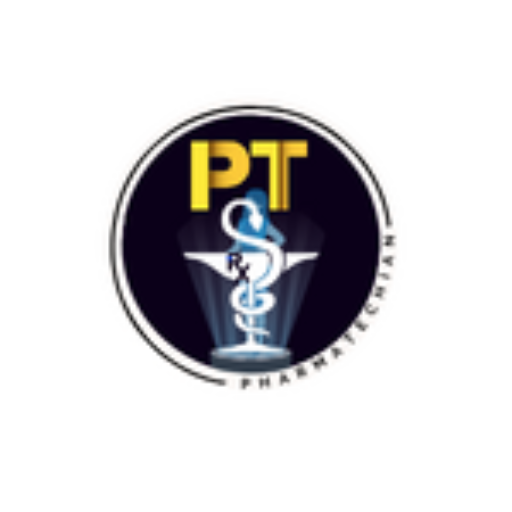
1. Growth and Expansion Strategy of AstraZeneca Pharmaceuticals
Overview:
AstraZeneca, a global biopharmaceutical company, has demonstrated significant growth and expansion through strategic acquisitions, investments in R&D, and an aggressive market penetration strategy. The company’s focus on therapeutic areas such as oncology, cardiovascular, and respiratory diseases has been central to its growth.
Key Milestones:
- Mergers and Acquisitions:
- Acquisition of Alexion Pharmaceuticals (2020): Enhanced AstraZeneca’s capabilities in rare diseases and immunology.
- Purchase of MedImmune (2007): Strengthened AstraZeneca’s position in biologics and vaccines.
- R&D Investments: AstraZeneca allocates approximately 25-30% of its revenue to R&D, reflecting its commitment to innovation and development.
- Market Penetration: The company has expanded its global footprint, focusing on emerging markets in Asia and Latin America, while maintaining strong positions in developed markets.
Graphical Representation:
2. Innovation and R&D in AstraZeneca Pharmaceuticals
Overview:
AstraZeneca’s R&D efforts are pivotal to its competitive advantage, focusing on high-impact therapeutic areas and leveraging advanced technologies.
Innovation Pipeline:
- Breakthrough Drugs:
- Tagrisso (osimertinib): A revolutionary treatment for non-small cell lung cancer (NSCLC).
- Imfinzi (durvalumab): An innovative immunotherapy for various cancers.
- Technological Advancements: AstraZeneca employs advanced technologies like genomics and artificial intelligence to accelerate drug discovery and development.
- Partnerships: Collaborations with institutions like the University of Oxford and research partnerships in oncology and cardiovascular diseases.
Graphical Representation:
3. Challenges and Regulatory Compliance
Overview:
AstraZeneca faces several challenges related to regulatory compliance and intellectual property that impact its operations and market position.
Major Challenges:
- Regulatory Compliance: Navigating diverse regulatory environments, including stringent FDA and EMA guidelines, requires significant resources and expertise.
- Patent Laws: Protecting intellectual property in key markets is crucial, with ongoing challenges related to patent expirations and generic competition.
- International Trade: The company must manage trade barriers and tariffs, especially in emerging markets, to ensure a steady supply of products.
Graphical Representation:
4. Impact of COVID-19 on AstraZeneca Pharmaceuticals
Overview:
The COVID-19 pandemic had a profound impact on AstraZeneca, affecting its operations, supply chain, and product offerings.
Adaptation Strategies:
- Vaccine Development: AstraZeneca developed the Oxford-AstraZeneca COVID-19 vaccine, a significant contribution to global vaccination efforts.
- Operational Adjustments: Implementation of remote work protocols and virtual clinical trials to ensure continuity of R&D.
- Supply Chain Management: Adjustments to supply chains to handle increased demand for vaccines and ensure uninterrupted delivery of other critical medications.
Long-term Effects:
- Business Model: Accelerated digital transformation and adoption of new technologies for remote collaboration and clinical trials.
- Market Strategy: Enhanced focus on vaccine development and public health initiatives.
Graphical Representation:
5. Market Penetration and Globalization
Overview:
AstraZeneca has expanded its global presence through targeted market strategies and a focus on both developed and emerging markets.
Market Expansion Strategies:
- Emerging Markets: Significant investments in countries like China and India to capture growth in high-demand therapeutic areas.
- Developed Markets: Strengthening its position in the U.S. and Europe through a robust product pipeline and strategic acquisitions.
- Overcoming Barriers: AstraZeneca uses local partnerships and tailored market strategies to navigate regulatory hurdles and competitive pressures.
Graphical Representation:
6. Corporate Social Responsibility (CSR) and Ethical Practices
Overview:
AstraZeneca is committed to CSR and ethical practices, focusing on public health, education, and environmental sustainability.
CSR Initiatives:
- Public Health: Programs to improve access to medicines in low-income regions and support for global health initiatives.
- Education: Scholarships and educational programs to support the next generation of scientists and healthcare professionals.
- Environmental Sustainability: Goals to reduce carbon emissions, improve waste management, and implement sustainable sourcing practices.
Graphical Representation:
7. Supply Chain Management and Operational Efficiency
Overview:
AstraZeneca employs advanced strategies to ensure efficient supply chain management and operational excellence.
Key Strategies:
- Supply Chain Optimization: Use of advanced analytics and digital tools to enhance supply chain efficiency and resilience.
- Cost Management: Focus on cost control through lean manufacturing practices and strategic procurement.
- Quality Standards: Implementation of stringent quality control measures to meet global regulatory standards.
Graphical Representation:
8. Competitor Analysis and Market Position
Overview:
AstraZeneca competes with major pharmaceutical companies globally, including Pfizer, Novartis, and Johnson & Johnson.
Comparative Analysis:
- Market Position: AstraZeneca is a leading player in oncology and respiratory diseases, with a strong presence in both developed and emerging markets.
- Product Portfolio: Compared to competitors, AstraZeneca has a diversified portfolio with a focus on innovative therapies and high-growth therapeutic areas.
- Pricing Strategies: Competitive pricing and value-based pricing models to enhance market share and accessibility.
Graphical Representation:
9. Sustainability and Environmental Impact
Overview:
AstraZeneca is dedicated to enhancing its sustainability efforts and reducing its environmental impact.
Sustainability Efforts:
- Waste Management: Initiatives to minimize waste generation and enhance recycling across operations.
- Carbon Footprint: Commitment to achieving carbon neutrality by 2025 and reducing energy consumption.
- Sustainable Sourcing: Implementation of sustainable sourcing practices and responsible supply chain management.
Graphical Representation:
10. Financial Performance and Investment Strategies
Overview:
AstraZeneca has demonstrated strong financial performance, driven by strategic investments and a focus on high-growth areas.
Financial Metrics:
- Revenue Growth: Consistent revenue growth supported by successful product launches and strategic acquisitions.
- Profitability: Healthy profit margins, particularly in high-margin therapeutic areas like oncology and immunology.
- Capital Allocation: Strategic allocation of capital to R&D, acquisitions, and market expansion, supporting long-term growth and innovation.
Graphical Representation:
11. Problems and Challenges
Overview:
AstraZeneca faces various challenges that impact its operations and strategic goals.
Key Challenges:
- Regulatory Hurdles: Adapting to complex and evolving regulatory requirements in different regions.
- Patent Expiry: Managing revenue impacts from the expiration of key drug patents and the subsequent entry of generics.
- Competitive Pressure: Facing intense competition in the global pharmaceutical market, requiring continuous innovation and differentiation.
Graphical Representation:
12. Future Plans
Overview:
AstraZeneca’s future plans focus on sustaining growth, enhancing innovation, and expanding its global presence.
Strategic Goals:
- Geographic Expansion: Further penetration into emerging markets with a focus on high-growth therapeutic areas.
- Innovation: Continued investment in R&D to drive innovation in oncology, respiratory, and cardiovascular therapies.
- Sustainability: Advancing sustainability initiatives to achieve carbon neutrality and enhance environmental stewardship.
Graphical Representation:
13. Adoption of Artificial Intelligence and Blockchain
Overview:
AstraZeneca is incorporating advanced technologies like AI and blockchain to drive innovation and efficiency.
Technological Adoption:
- Artificial Intelligence: Leveraging AI for drug discovery, clinical trial optimization, and personalized medicine.
- Blockchain: Exploring blockchain for enhancing supply chain transparency, ensuring product integrity, and improving data management in clinical trials.
Graphical Representation:
Author




